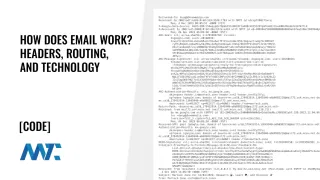A widely adopted protocol for securing email communications. It provides end-to-end encryption and digital signatures, ensuring email messages’ confidentiality, integrity, and authenticity. Features and capabilities include:
- Message Encryption: Ensures confidentiality of email content.
- Digital Signatures: Provides authentication and non-repudiation.
- Certificate-based Authentication: Uses digital certificates for identity verification.
- Integrity Checking: Ensures messages haven’t been tampered with during transmission.
- Compatibility: Works with most major email clients and services.
- Attachment Security: Can encrypt and sign email attachments.
History and Development
- Origin: S/MIME was first proposed by RSA Data Security Inc. in 1995.
- Standardization: It became an IETF standard in 1999 with RFC 2311.
- Versions: S/MIME has undergone several versions, with S/MIME version 3.2 (RFC 5751) being widely used today.
- Industry Adoption: It has become the de facto standard for email security in many corporate environments.
S/MIME uses a public key infrastructure (PKI) and asymmetric cryptography to provide security features.
Key Components:
- Digital Certificates: Contains the user’s public key and identity information.
- Private Key: Kept secret by the user, used for decryption and signing.
- Certificate Authority (CA): Trusted third party that issues and verifies digital certificates.
Encryption Process:
- The sender obtains the recipient’s digital certificate (containing their public key).
- A one-time symmetric key is generated to encrypt the message.
- The symmetric key is encrypted with the recipient’s public key.
- Both the encrypted message and the encrypted symmetric key are sent.
Decryption Process:
- The recipient uses their private key to decrypt the symmetric key.
- The decrypted symmetric key is then used to decrypt the message.
Digital Signatures:
- The sender creates a hash of the message.
- This hash is encrypted with the sender’s private key to create a digital signature.
- The recipient verifies the signature using the sender’s public key.
S/MIME in Practice
Common Uses:
- Business Communications: Widely used in corporate environments for secure email.
- Healthcare: Used to comply with regulations like HIPAA for patient data protection.
- Government: Adopted by many government agencies for secure communications.
- Legal Industry: Used for confidential client communications.
Implementation:
- Email Client Support: Built into many popular email clients (Outlook, Apple Mail, Thunderbird).
- Mobile Support: Increasingly supported on mobile email apps.
- Certificate Enrollment: Users typically obtain certificates from their organization or a public CA.
- Key Management: Often managed centrally in corporate environments.
Certificate Management
- Certificate Acquisition: Obtained from a trusted Certificate Authority.
- Certificate Renewal: Certificates have expiration dates and need periodic renewal.
- Certificate Revocation: Mechanisms exist to revoke compromised certificates.
- Certificate Stores: Operating systems and browsers maintain trusted certificate stores.
Security Considerations
- Trust Model: Relies on a hierarchical trust model with Certificate Authorities at the top.
- Private Key Protection: The security of the private key is crucial.
- Certificate Validation: Proper validation of certificates is essential to prevent attacks.
- Encryption Strength: Uses strong encryption algorithms, but strength can vary based on configuration.
S/MIME vs. Other Email Security Methods
- PGP/GPG: S/MIME uses a centralized trust model, while PGP uses a web of trust (WoT).
- TLS: S/MIME provides end-to-end encryption, while TLS secures the transport layer.
- DKIM: S/MIME offers message-level security, while DKIM focuses on domain-level authentication.
Challenges and Limitations
- Certificate Management: This can be complex, especially for individual users.
- Interoperability: Sometimes, issues arise when communicating across different email systems.
- Key Recovery: Losing access to private keys can result in losing access to encrypted emails.
- Adoption: While common in enterprises, less widely adopted by individual users.
- Metadata Exposure: Does not encrypt email headers (subject, sender, recipient).
Future Developments
- Quantum Resistance: Research into quantum-resistant algorithms for long-term security.
- Automated Certificate Management: Efforts to simplify the certificate lifecycle.
- Enhanced Mobile Support: Improving S/MIME functionality on mobile devices.
- Integration with Other Security Technologies: Combining S/MIME with other security measures for comprehensive protection.
S/MIME stands as a robust and widely adopted standard for email security, particularly in corporate and regulated environments. Its integration into popular email clients and strong cryptographic foundations make it a reliable choice for organizations seeking to secure email communications. While it faces challenges in complexity and universal adoption, S/MIME continues to evolve and adapt to meet the changing landscape of email security threats. As digital communication security remains a critical concern, S/MIME is likely to continue playing a significant role in protecting sensitive information exchanged via email.
